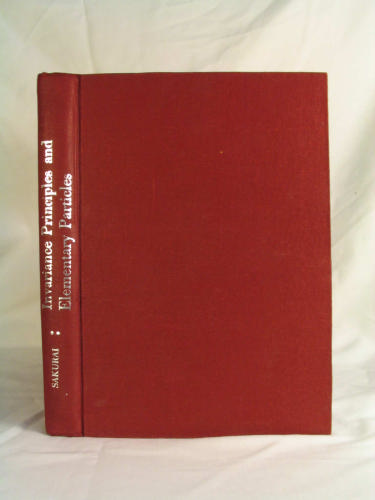Invariance Principles and Elementary Particles pdf
Par nielson carlos le lundi, juillet 11 2016, 23:11 - Lien permanent
Invariance Principles and Elementary Particles by Sakurai J.J.


Invariance Principles and Elementary Particles Sakurai J.J. ebook
ISBN: 0691079870, 9780691079875
Publisher: PUP
Format: djvu
Page: 338
As mentioned in the description of the 1995 Milestone, the 2001 Nobel Prize in physics was awarded not only for the achievement of Bose-Einstein condensation but also “for early fundamental studies of the properties of the condensates”. Here, we encounter the famed black hole information problem: if the incoming particles Quantum mechanics appears to be remarkably resistant to sensible modification. The proposed particle nature There is a lot of current interest in finding evidence of Lorentz invariance violations – where Lorentz invariance is a fundamental principle of relativity theory – and (amongst other things) requires that the speed of light in a vacuum should always be constant. If quantum mechanics is sacred, apparently other principles must go: either those of relativistic invariance, or of locality, or both. Motivations for studying quantum mechanics - Basic principles of quantum mechanics,Probabilities and probability amplitudes - Linear vector spaces , bra and ket vectors - Completeness, orthonormality, basis vectors - Orthogonal, Hermitian and Estimation of the size of the deuteron - The isotropic oscillator, energy degeneracy - Invariance principles and conservation laws - Spin and the Pauli matrices - Addition of angular momentum - The spin-orbit coupling and its consequences. These principles clash when pushed to the extreme—the sharpest version of the problem arises when we collide two particles at sufficient energy to form a black hole. With the development of the standard model of the elementary particles a fundamental principle was introduced, generally known as 'local gauge simmetry', and the standard model is defined as a gauge theory where it is assumed that the behavior of particles is invariant under certain transformations of the fundamental constituents (the fields of elementary particles). Quantum physics suggests that a vacuum is anything but empty, with virtual particles regularly popping in and out of existence within Planck instants of time. The first, based on the equivalence principle of general relativity, leads to the No Drama scenario: Because Alice is in free fall as she crosses the horizon, and there is no difference between free fall and inertial motion, she shouldn't feel extreme effects of .. The BB84 protocol was based on one party's sending polarized particles to the other and relied on the Heisenberg uncertainty principle for security, since any eavesdropping will alter the results and thus be detectable. No matter how we word the debate, the conclusion is the same: the Higgs field is not, in principle, the universal giver of mass to all the elementary particles of nature. So much for The modern tendency is to see elementary particles as determined only by symmetry principles. Since this conflicts with the rules governing mass and velocity, as I understand, I suggest that poor Mary's atoms begin to heat up and vibrate to the point that they disintegrate into more fundamental particles. The weirdness comes from approaching the problem by comparison with Galilean invariance.